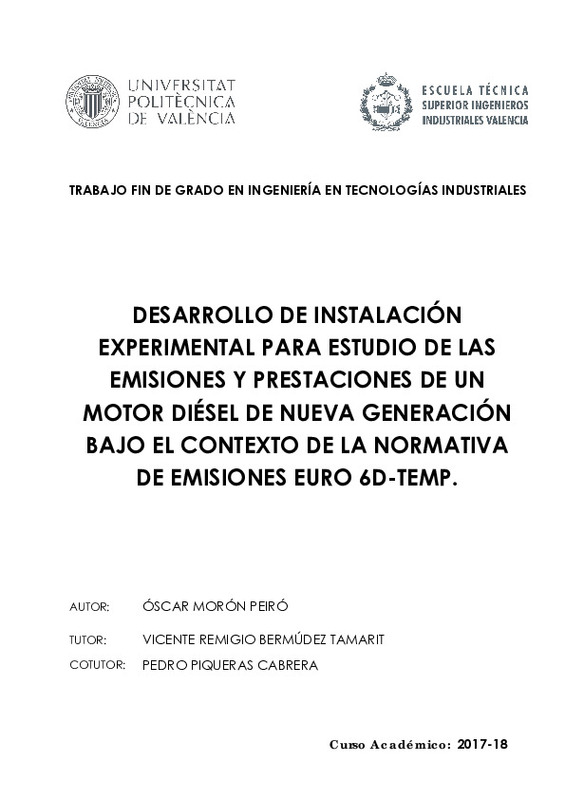|
Resumen:
|
[ES] Numerosos estudios han evidenciado las claras discrepancias entre las emisiones homologadas y las que se producen en condiciones de conducción real. De ahí que exista un profundo consenso por la necesidad de normativas ...[+]
[ES] Numerosos estudios han evidenciado las claras discrepancias entre las emisiones homologadas y las que se producen en condiciones de conducción real. De ahí que exista un profundo consenso por la necesidad de normativas internacionales convergentes así como por la definición de nuevos procedimientos de homologación que contemplen las condiciones de conducción real. En este contexto, en la normativa Euro 6d-temp ha entrado en vigor el procedimiento WLTP (Worldwide harmonized Light vehicles Test Procedures) que impone un nuevo ciclo (WLTC) mucho más dinámico que el anterior NEDC. Además, se contempla una nueva fase de homologación RDE (Real Driving Conditions) en la que es necesario incluir el efecto de la altitud y de la temperatura ambiente sobre las emisiones del motor.
En este proyecto se desarrollará una instalación experimental que permita evaluar el impacto de estas condiciones de contorno sobre la respuesta en emisiones de un motor Diésel de nueva generación. En la fase inicial del proyecto se realizará la selección de los diferentes sistemas de que permitan simular ciclos dinámicos de conducción, en diferentes condiciones de altitud. En la fase siguiente se ejecutará el montaje e instrumentación de un motor diésel de nueva generación y se acoplarán todos los sistemas auxiliares de acondicionamiento térmico de los distintos fluidos del motor, así como los equipos de medida de emisiones contaminantes.
Finalmente se realizarán ensayos de validación de la instalación que certifiquen la capacidad de la misma para evaluar el comportamiento del motor operando en condiciones ambientales variables controladas con elevada precisión, de modo que la temperatura y presión ambiente podrán ser impuestas durante los ensayos.
[-]
[EN] Numerous studies have shown the clear discrepancies between homologated emissions and those that occur under real driving conditions. Hence, there is a deep consensus on the need for converging international regulations ...[+]
[EN] Numerous studies have shown the clear discrepancies between homologated emissions and those that occur under real driving conditions. Hence, there is a deep consensus on the need for converging international regulations as well as the definition of new homologation procedures that contemplate real driving conditions. In this context, in the Euro 6d-temp regulation the WLTP procedure (Worldwide harmonized Light vehicles Test Procedures) has entered into force, which imposes a new cycle (WLTC) much more dynamic than the previous NEDC. In addition, a new phase of RDE (Real Driving Conditions) homologation is contemplated, in which it is necessary to include the effect of the altitude and the ambient temperature on the engine emissions.
In this project, an experimental installation will be developed to evaluate the impact of these boundary conditions on the emission response of a new generation diesel engine. In the initial phase of the project, the selection of the different systems will be carried out in order to simulate dynamic driving cycles, under different altitude conditions. In the next phase, the assembly and instrumentation of a new generation diesel engine will be executed and all the auxiliary thermal conditioning systems of the different engine fluids will be coupled, as well as the equipment for measuring pollutant emissions.
Finally, validation tests of the installation will be carried out to certify the capacity of the same to evaluate the behavior of the engine operating in variable environmental conditions controlled with high precision, so that the temperature and ambient pressure may be imposed during the tests
[-]
|







